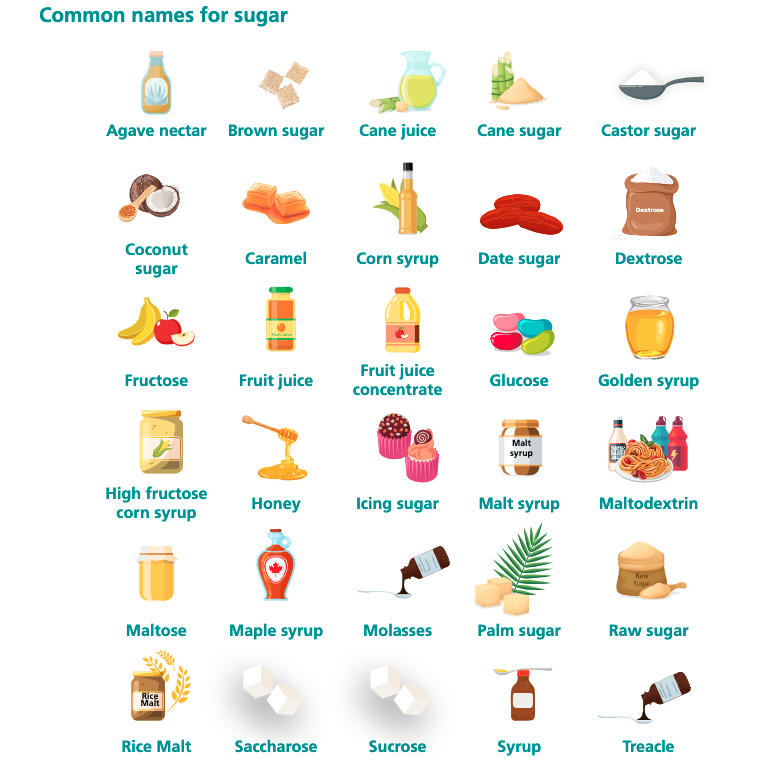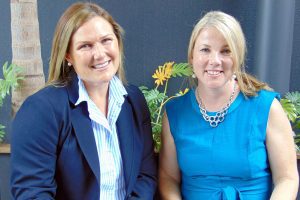Nearly half of all adults (47.8%) consume too much sugar figures[1] from the Australian Dental Association (ADA) recently reveal for Dental Health Week 2020 (3-9th August).
Add to this the fact that one in three (32.1%) adults is walking around with untreated tooth decay (compared to one in five or 20% the last time it was measured), that 30% kids aged 5 to 6 have decay in their baby teeth and that only 53% of us are cleaning our teeth twice a day, and the results are that the nation’s oral health is getting worse rather than better.
The figures are from the ADA’s Oral Health Tracker[1], produced in collaboration with the Mitchell Institute.
One of the main culprits in this worrying decline is our addiction to sugar, which is frequently added to or hidden in food and drink. These hidden sugars play a major role in this oral health crisis – here are a few sobering facts about sugar:
- Sugar can come in many disguises – it can go by over 50 different names – from agave nectar to dextrose to tapioca sugar – luring shoppers into buying goods they may not be aware are doing them harm.
- We all know about the sugar in cakes, cordials, ice cream and biscuits – but food manufacturers cleverly hide it in seemingly healthy foods like muesli bars, flavoured yoghurts, dried fruit, pasta sauces, tinned soups, salad dressings, tomato and barbecue sauces, some deli meats and some sushi.
- The average teenager consumes 20 teaspoons of added sugar a day while the World Health Organisation recommends just six or less teaspoons a day for better health outcomes like decreased risk of developing tooth decay.
- One in three kids by the age of five has tooth decay in their baby teeth and 40% kids by age 12-14 have tooth decay in their adult teeth.[2]
- The average regular 600ml soft drink contains 16 teaspoons of sugar and sugary drinks are the largest source of added sugar in the Australian diet.
- A 250ml bottle of shop-bought fruit juice is considered a single serve yet it contains 20g or 5 teaspoons of sugar.
READ RELATED
- Gum Disease Warning Issued for World Diabetes Day
- Fear of dental visits leading to vicious cycle of decay
- New On-line Dental Program Aimed at Older Australians
“Excessive sugar consumption is having a hugely detrimental effect on kids and adults’ teeth and this has been going on for decades – it’s time we took decisive, affirmative action to empower consumers,” said the ADA’s Oral Health Promoter Dr Mikaela Chinotti.

“For Dental Health Week the ADA wants to drive the message to consumers that the best way not to be confused or misguided by hidden (or added) sugars in the food and drinks we buy is to educate ourselves.
One way of doing this is reading food and drink labels and knowing what is in the items you are consuming so we make healthy decisions at the checkout.”
Here are some of the ADA’s top tips for reducing the amount of sugar in your diet from Dr Chinotti:
- When deciphering the list of ingredients on food labels, the higher up to the top of the list an ingredient is, the more of it is present in the item.
- Does the label indicate that there is too much sugar? Look at the sugar content per 100g serving – if it’s more than 15g you should consider looking for an alternative with a lower sugar content. Ideally look for food and drinks with less than 5g per 100g. Using the 100g column allows you to make comparison between products – essentially it lets your compare ‘apples with apples’.
- How much sugar is in this? Check the sugar content on the label – this may be per serve or per 100g, depending on what you’re looking at and how much you consume. But to make the content more easily understandable, turn it into teaspoons. Divide the value by 4 as one teaspoon of sugar is equal to 4 grams. So, for example if the label says 10g, this equates to 2.5 teaspoons of sugar.
- Let’s be clear about what’s in a name: ‘added’ sugar is the sugar added to food products during manufacturing or processing, or at the time of consumption, as opposed to ‘naturally occurring’ sugar in fruits, vegetables and milk, which is part of the food’s natural structure.
- Remember the recommended daily limit as laid down by the WHO is 6 teaspoons a day or 24g. This includes added sugars, as well as sugars present in honey, syrup and fruit juice.
- Don’t be fooled: sugar content per serve may look low but your idea of one serve may differ to that recommended on the label by the manufacturer.
“The Australian Dental Association wants to see ‘added’ sugar included on the Nutrition Information Panel of foods and drinks to make it easier for people in making a healthy choice. At the moment, people need to figure out the added sugars by looking at the list of ingredients, and this is not always an easy feat.
“This measure, which involves input from the government, will act as a good starting point in enabling consumers to make sensible, informed choices for the good of their oral and whole body health,” said Dr Chinotti.
Read more of Life Begins At
[1] The Oral Health Tracker is a report card on preventable oral diseases and their risk factors which tracks the nation’s progress for a healthier Australia by 2025. In 2018, ADA in conjunction with the Mitchell Institute developed the Australian Oral Health Tracker, a report card that looks at 14 oral health risk factors and sets targets for these factors to reach by 2025. The inaugural report card was released on World Oral Health Day 2018. It was the first of its kind globally and placed Australia as the first country in the world to have established clear and measurable oral health targets for the child and adult population.The data in the 2020 Tracker comes from a range of sources including the ADA’s Consumer Survey 2019, NSAOH (National Study of Adult Oral Health 17/18), National Drug Strategy Household Survey 2016 and Cancer in Australia 2019. Where possible, the 2020 includes updated statistics reported in the first edition of the Adult Oral Health Tracker.
[2] The Child Oral Health Survey 2012-2014




















Add Comment